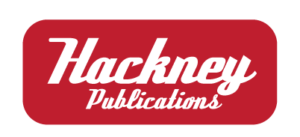By Connor Glass | Attorney, of Church Church Hittle + Antrim
The ACC, Big Ten, Big 12, Pac-12, and SEC recently entered into a proposed settlement with the plaintiffs in the House, Hubbard, and Carter cases which has been preliminarily approved. With the House settlement looming, many coaches, administrators, student-athletes, boosters, and various stakeholders across college sports, both within the named defendant conferences and within the non-defendant conferences, are looking for clarity as to what a post-House NCAA will look like.
In recent weeks, the NCAA released a series of Q&A’s that address (to varying degrees of success) the impact of the proposed settlement terms on Division I institutions. The recent document, updated on December 9, 2024, consists of 35 questions and answers. This article is comprised of some of the key takeaways from the NCAA’s guidance.
1. Opting-In v. Opting Out
Institutions must provide notice of their intent to opt-in to the settlement by no later than March 1st of each year, beginning March 1, 2025. By opting in, institutions must fulfill the following obligations:
- Benefits must comply with the Pool cap and must be reported within 60 days of the end of the academic year;
- Institutions must report all institutional NIL licenses to the designated entity, as well as any other benefits provided to student-athletes beyond what is currently permitted by NCAA rules;
- Institutions must adhere to roster limits (Fall sports must adhere by the first date of competition. Winter and spring sports must adhere by December 1st or by the first date of competition);
- Institutions must ensure that student-athletes comply with NIL disclosure requirements for third-party deals greater than $600.
Institutions that decide to opt-in to the settlement may still opt-out but must honor existing agreements with student-athletes. Institutions that opt-out may continue to provide benefits to student-athletes that are permissible under current NCAA rules, including Alston payments up to $5,980. Moving forward, the NCAA will maintain a record of currently permissible benefits on LSDBi so institutions know what benefits subject them to the settlement.
2. NIL Reporting and Fair-Market-Value Assessment
As part of the settlement terms, all Division I student-athletes will be required to report NIL deals worth $600 or more, regardless of whether their institution opted in or opted out. All third-party NIL agreements with payments occurring after July 1, 2025, will be subject to fair-market-value assessment. Additionally, all third-party NIL agreements executed after settlement approval (as early as April 7, 2025) will be subject to fair-market-value review.
Deloitte has been selected for the NIL fair-market-value reporting platform. However, the defendant conferences will be responsible for overseeing the administration of the fair-market-value system. Any challenges to determinations related to fair-market-value, will be addressed by third-party arbitrators approved by the plaintiffs, defendant conferences, and the NCAA.
3. Modifications to NCAA Rules
Scholarship limits will be eliminated as part of the settlement. Institutions that do not opt-in can give up to full scholarship limits based on current NCAA bylaws but not up to the House roster limits.
The Division I Board of Directors will review and modify bylaws to align with the settlement’s requirements. This includes changes to amateurism, eligibility, financial aid, recruiting, and NIL.
Conclusion
Moving forward, the NCAA indicates in the Q&A that they will continue to receive questions about the settlement at settlementquestions@ncaa.org. Student-athletes can learn more about the settlement at www.collegeathletecompensation.com, and a separate Q&A is currently being developed for student-athletes.

